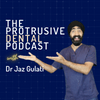Podcast: Play in new window | Download ()
We’ve now come to the last bit of this 3-part Oral Surgery Complication series with Dr. Chris Waith. I’m going to be honest, I have a lot of concerns about Tuberosity Fractures – they scare the bejeebers out of me! We all know that it can be a really nasty complication. Fear not! Dr Waith will teach you how to prevent and manage maxillary tuberosity fracture.
“If there’s a really tight contact between those three molars, the two teeth you’re extracting, just spend a minute skimming the contact points.“ – Dr Chris Waith
In this episode, we discussed about:
- Risk factors of tuberosity fractures 1:40
- How to manage when you hear the crack of the tuberosity 3:57
- High risks patients 6:35
- Leaving a loose bone as a space filler in soft tissue 9:07
Join us in our Telegram group! Let us help each other out!
If you loved this episode, be sure to check out the first part! Dry Sockets – How to Prevent and Manage Them?







